Economy and ecology
The economic benefits of tire recycling are undeniable. In a number of countries, the combustible gas that is released during the heat treatment of tires is used to heat premises, and electricity is also generated with its help. Liquid pyrolysis products are used in the production of plastics, and crushed rubber particles are an excellent raw material for asphalt bitumen.
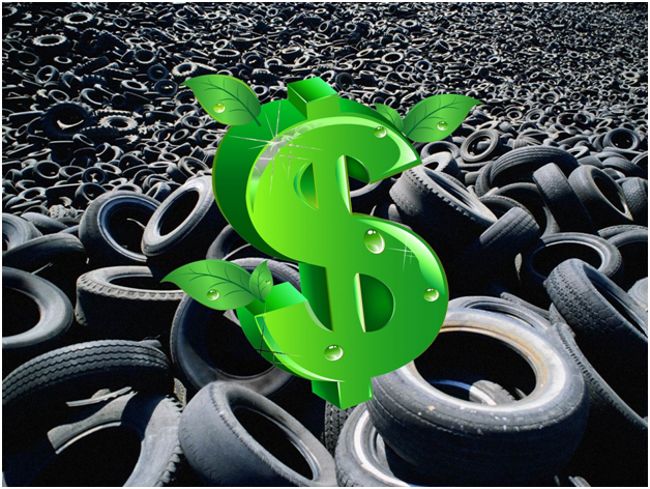
At the same time, recycling tires helps to avoid environmental pollution.
Thus, in the coming years, the ways of recycling tires will be improved, and the volume of rubber processing will grow.
This is especially true in developed countries, where environmental issues and the recycling of materials have long been under the scrutiny of both the citizens themselves and the authorities.
The situation in Russia so far resembles the state of affairs in African countries, but the principles of responsible consumption are gradually penetrating the minds of our citizens. In a few decades, both car enthusiasts and business representatives will know exactly what and how to do with old tires in order to get the maximum benefit from them for themselves and the surrounding nature.
Processing approaches
At the moment, two fundamentally different ways of solving the problem of recycling obsolete tires have been outlined:
- electromechanical crushing using cutting equipment (in an elastic state or with cooling) with further processing of crumb rubber into reclaimed or industrial rubber goods;
- processing by changing the chemical structure of rubber using rubber pyrolysis or thermal destruction to obtain liquid decomposition products similar to petroleum products, suitable for the production of anticorrosive mastics, lubricating fuels, etc.
Electromechanical grinding
The main disadvantages of the method:
- low coefficient of "net" operating time of technological lines (no more than 60%) and downtime, which are associated with the repair of equipment and time costs for replacing cutting elements. Downtime and out of service of the lines are especially significant when grinding steel cord tires, and they account for over 90 percent of the tire range;
- rapid wear of the cutting structure, short service life of the equipment, low productivity, significant energy costs, tangible financial costs and, as a result, a very high cost of crumb rubber.
When using mechanical shredding of tires with the use of a cutting tool, energy consumption increases significantly. They reach - 500-900 kW / h per 1 ton of tires. With a decrease in energy consumption, significant savings will still not be achieved due to downtime and high costs for the restoration of cutting tools and maintenance of technological equipment.
Change in the chemical structure of a material
In such processing of tires, the rubber component of the rubber is not retained. The products of the decomposition of rubber and those. carbon has a lower value than tire recycled products, which retain the rubber and return it to the production field.
The dominant disadvantage of these two options is the high cost of the final product and, as a result, unsatisfactory profitability and low production efficiency.
Read also: Additive to steel and cast iron for durability
Alternative ways
There are alternative ways of recycling tires that have not found widespread use, but nevertheless they can also be used and get the desired result:
- grinding using an "ozone knife", in which a worn-out car tire is placed in a special chamber, where it is exposed to ozone and then mechanically crushed using a tool. The product obtained in this case will retain the properties of the initial rubber; therefore, this method is not widely used in production. Moreover, this method cannot be considered environmentally friendly, since it involves the use of significant concentrations of ozone, which is an effective carcinogen;
- baro-destructive crushing method, when tires are first cut into rather large fragments, after which they are compressed in a matrix using a punch, bringing the material to a fluid state and separating the rubber from the metal cord. The final product does not retain the original properties of rubber and, therefore, is not widely used. The method involves high energy consumption;
- crumbling tires using a rotary disperser, according to which fragments of 0.15-0.2 cm in size of the preparatory crushed tire are compressed in the sleeve by means of a screw and passed through a gap of 1-1.5 mm and thus rubber crumb with a high degree of development of the outer sides is obtained received fractions. This method involves high energy consumption and pre-shredding of tires.
Rotary disperser sleeves, which are very expensive, are its main element, wear out soon, and this leads to a rapid disperser out of working condition and, as a result, to a high production cost of the product.
There are a number of even less popular ways to crush used tires, which involve high energy costs and low productivity, costs for preventive maintenance of equipment and high product costs.
DIY equipment - DRIVE2
Good time of day Everyone, I decided to write about how my father and I made equipment for extracting wire from used tires. Since on Drive only 3 days after registration, not all photos are now with us (on watch) in 4 days the watch will end, I will upload other photos on equipment for plastic processing.
1) a photo of a wire from a landing ring, 2) tires assembled around the city in a month. 3) the final part, it remains to screw the panel with the starter. (Only assembled)
normal pump NSh and Distributor R-80, oil tank (40-liter gas cylinder), agricultural machinery.
in the process of pulling out the wire, I noticed that the wire from the wheels of Belshin and KAMashin OMSK The tire is oval and often breaks without even leaving the wire. side braid.
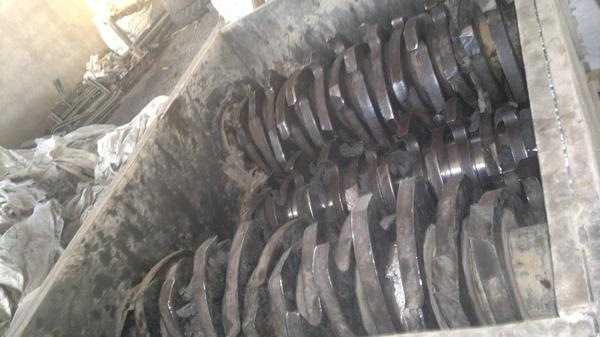
Crusher for tires, 4 shafts for each shaft with a R-250 gearbox and a 7.5 kW motor. 1489rpm
here you can see the work of the crusher.
here you can see the work of the cord remover
I apologize for the poor quality shooting (the lack of camera experience affects)))
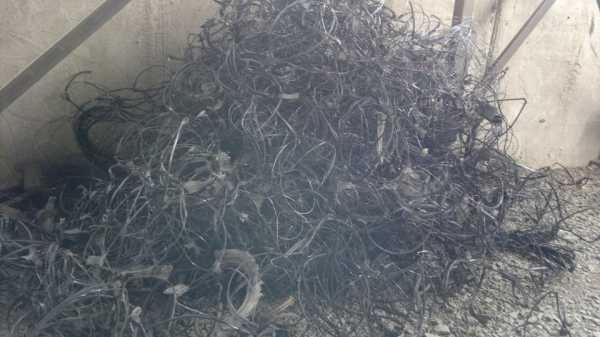
Full size
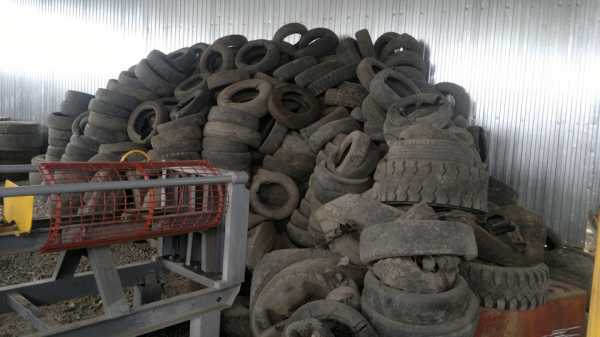
Full size
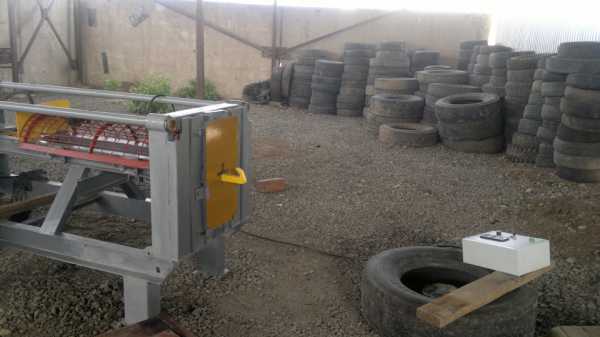
Full size
How much do they pay for crumb rubber?

For a ton of raw materials, on average, you can get 150,000.00 rubles. The enterprise described above, with a continuous processing process, can produce more than 100 tons of crumbs per month and receive 1,500,000.00 rubles for the raw materials sold.
In the course of processing, textile (20 tons) and metal (30 tons) cords will also be obtained. When selling them, you can get 40,000.00 rubles and 90,000.00 rubles, respectively. It turns out 1,630,000.00 rubles.
To find out the profitability of a business, you need to subtract taxes, social security contributions, salaries, transportation costs, electricity, etc. from the resulting figure.
Business plan for the production of crumb rubber with calculations

Used, old, defective car tires were used in the production of crumb rubber. For obvious reasons, one should not even talk about the search for raw materials and their price. Old tires can be found in large quantities. You can buy them for a minimal payment, and sometimes you can go through to pay for delivery to your company.
The production of crumb rubber, as already mentioned, is quite affordable for small businesses. The $ 17,000 production line can quickly recycle a wide variety of tires: car, bus and other tires.
At the moment, there are two main methods by which crumb rubber is produced:
- Mechanical crushing.
- Shock wave crushing.
Shock-wave crushing of rubber into crumb is a relatively young method of tire recycling. The most popular is mechanical crushing.
The production of crumb rubber using a shock wave requires a special approach. In particular, there is a need for equipment in which the products will be located, such as refrigerated pantries, which are quite expensive. The advantageous possibility of installing equipment for the production of rubber crumb from tires by the shock wave method in smaller production areas is noticeable. You can save on monthly rentals. At the same time, the cost of electrical energy will be less than with an analog installation. But all the same, such equipment is fully justified at large and medium production volumes, since it is very expensive.
The production of crumb rubber can start with a small production volume and at a relatively low cost. Enough 40 square meters of production area with a ceiling height of 3m. A direct line for the production of crumb rubber will be installed, a 380 volt power supply will be connected and 2 workers who will control the operation of the semi-automatic equipment.
The best option during the period of reaching the payback point of the business is continuous work for a whole week. To do this, three work shifts should be organized. As a result, the staff will consist of eight persons. In addition, you should take care of the storage areas for raw materials and finished products. In this case, the space for storing tires should take four, or even five times more. In this regard, the surface of the room for raw materials (tires) may require up to 100m2, and for storage of finished rubber crumb - 20m2.
On this basis, the cost of 100 kilograms of products per hour will change and change. In this business plan, we define the fixed costs for the month:
It is a good idea to give customers the opportunity to recycle tires for money. Having your own collection point will help not only to reduce transport costs for the delivery of raw materials, but also to immediately receive preliminary additional income, which is described below.
If a production line produces 100 kilograms per hour, working without interruptions, then in a month the amount of finished products makes 24 tons of crumb rubber (100 kg * 8 hours * 30 days = 24,000).
Taking into account the average retail cost of crumb rubber of $ 0.28 per kilogram, we get a gross monthly income of $ 6720 (0.28 * 24000). It is also worth noting that metal remains in waste during production (wire in tire courts)
Its volume is about 7%
It is also worth noting that metal remains in waste during production (wire in tire courts). Its volume is about 7%.
Interesting fact! According to Goodyear Tire and Rubber, the average tire weight is about 22 pounds (up to 10 kg). At the same time, it contains 0.68 kg of steel cord (it serves as a reinforcing structure for the rubber structure in tires).
On the one hand, this is production waste, and on the positive side, it is a significant additional profit: 0.7 kg of metal wire and tire steel cord. And that 0.7 * 10 tires / hour * 8 hours * 30 days = 1680 kg of metal from 24 tons of tires - monthly!
The average price of scrap metal is about $ 200 per ton. As a result, we will receive an additional $ 336 profit from the sale of metal wire from the cord. It is worth thinking about how to organize your acceptance of car tires for recycling for money.
This amount of benefits is sometimes a more economically justified income received in the process of implementing this activity.
Furnace operation
The method of operation of an industrial pyrolysis plant for the processing of rubber products and tires involves several main stages of production:
- Preparation of material for its further decomposition in a retort.
- The resulting raw material during pyrolysis is fed into a device for cooling and partial condensation of pyrolysis gas.
- When passing through the condensing pipeline, the final separation into liquid and gaseous components occurs.
- When the remaining gas is dried, it is fed for further combustion in the furnace.
Large processing plants use additional catalyst plants in the rubber decomposition process.
In our country, the method of technological processing of rubber is not yet widely used, however, worthy samples of domestic-made installations are presented on the market.
The rapid development of the automotive industry and the availability of cars leads to the fact that every year the number of tires that have served their life is growing. The accumulation of tires has a negative impact on the environment, since this kind of waste practically does not decompose in a natural way in nature and therefore cannot be simply buried in special landfills. To avoid a man-made disaster, unnecessary tires should be disposed of.
There are several ways to dispose of unnecessary tires, but the most promising and environmentally correct method is pyrolysis, implemented in special installations (pyrolysis ovens).
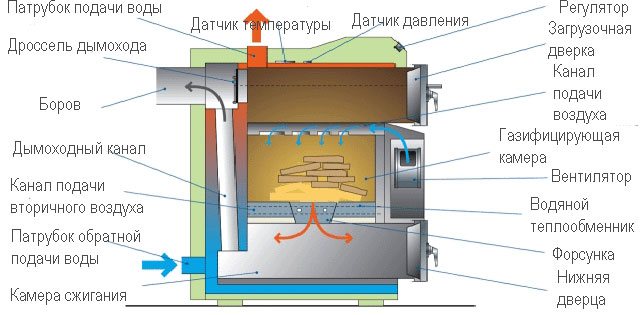
Schematic diagram of a pyrolysis oven with basic elements
Other Tire Grinding Methods
There are other methods of shredding old tires, but for various reasons, many of them have not been widely used. The most famous processing methods:
- using a rotary disperser;
- ozone knife method;
- baro-destructive method;
- shock-wave grinding (explosion-circular).
For a rotary disperser, the tire is crushed into small pieces. The rubber is then compressed in the sleeve and passed through a hole with a diameter of about 1 mm. The result is a fine rubber dust with a highly developed surface that can effectively react with other components of the mixtures. Such dust is used for the manufacture of sorbents, new tires, materials for roofing works, etc.

The processing of tires by the ozone knife method includes the effect of ozone on worn-out rubber in a special chamber and subsequent mechanical grinding. Ozone contributes to the destruction of the rubber structure, facilitating further grinding of the tire by mechanical methods. As a result, pure rubber crumb and metal are obtained from the old tire, while there is no need for separation, since metal and rubber are separated from each other when exposed to ozone.
When processing by the baro-destructive method, tires are first cut and crushed, and then, in a special chamber, under the influence of high pressure and temperature, the rubber is brought to fluidity, separating it from the metal cord. The result is a fine rubber crumb with a granule size of about 0.8 cm.
Secondary use
Recycling is also economically beneficial.Various types of valuable recyclable materials can be obtained from car tires, as well as a huge amount of finished products can be produced. New car tires and rubber shoes are produced from the waste of powder rubber of a very fine fraction (about 0.2 mm); this secondary resource is popular in Russia and the CIS countries.
Powder from waste of larger fractions is used in the production of composite roofing materials, rubber-bitumen mastic, waterproofing materials, as well as rubber coatings. Scrap metal is obtained from the metal cord, which is also used by Russian entrepreneurs. Also, textiles and rubber are obtained from tires.
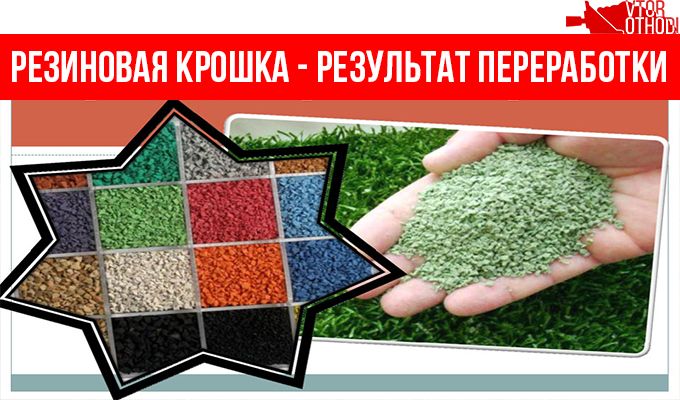
Recycling at home
Especially active and advanced people have the opportunity to recycle rubber with their own hands. What is needed for this? Spent cameras, tires, tires and a little bit of ingenuity. Recycling tires into crumbs at home is a rather complicated undertaking. In terms of their properties, tubes from old tires are more suitable. They are softer and more easily amenable to external influences.
In one scenario, the rubber should be cooled to a temperature of about -75 ° C. Agree, not everyone has such an opportunity. Therefore, let's use the traditional scenario:
- Take cameras
- Remove all unnecessary elements from them
- Cut them into thin strips
- Shred these strips
The rubber grinder in this case is an ax or scissors.
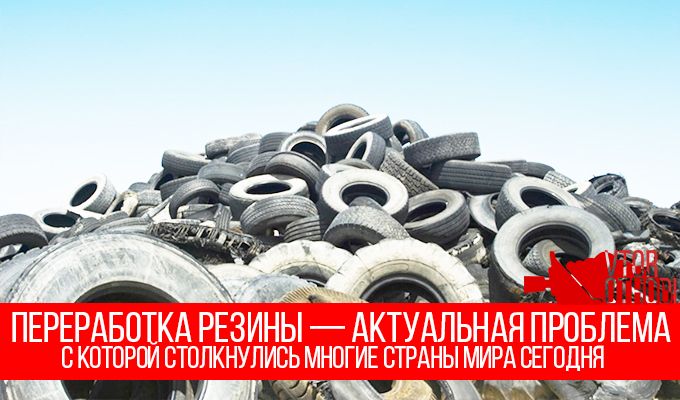
Mechanical processing method
The most professional method. The technological line is a sequence of installed working devices, overcoming which the material becomes a finished product.
Processing into crumb rubber goes through three stages:
- Preliminary preparation of tires. Initially, they are washed and cleaned of impurities, after which they are transported by a conveyor to the primary crushing unit, where they are ground by knife crushers to coarse pieces (30-50 mm).
- At the second stage of the technological process, the primary processed raw material is fed by means of a belt conveyor to the hammer mill, where it is re-crushed to a smaller size (10-20 mm). It is at this stage of processing that metal and textile cords and bead wires are separated from the rubber. The textiles are separated by a special textile removal system, and the metal is separated by a magnetic separator. The collected metal waste is then briquetted.
- At the final stage, processing into crumb is already being carried out. As equipment for processing tires into crumb, an extruder is used - a shredder, in which the rubber mass is ground into a fine powder. At this stage of tire processing, additional cleaning of crumbs from textiles and metal is carried out using a gravity separator. After that, the crushed rubber crumb is divided into fractions and packed in 20 kg polyethylene bags or in big bags (soft containers) with a carrying capacity of up to 1000 kg.
Today, there are a sufficient number of manufacturers of this equipment on the Russian market.
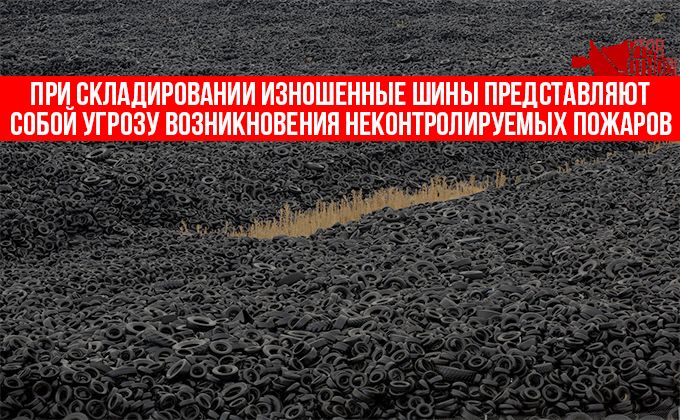
Chemical processing method
In the chemical process, car tires are pyrolized. With this method of processing, the thermal decomposition of rubber into its constituent elements occurs. The tires are pre-crushed into a homogeneous mass and sent to the oven, where they decompose at a temperature of 500 - 800 ° C. This procedure takes 10 to 20 minutes. In the process of thermal decomposition of rubber, about 50% of hydrogen and 26% of methane are formed, as well as solid pyrolysis products, which are then used in wastewater treatment at wastewater treatment plants in Russia.
There is also an effective, but expensive physicochemical method of processing tires into crumb rubber - cryogenic shredding of automobile tires. Rubber crushing is carried out in a special cooling chamber at extremely low temperatures (down to - 120 ° C).A refrigerant (liquid nitrogen) is fed into this chamber, cooling to ultra-low temperatures. Under strong cooling conditions, the rubber acquires a glassy state. Rubber crushing occurs when struck with a special hammer. After crushing, textiles and metal are removed from the crumb rubber.
Tire shredding machines
There are three types of machines for processing old tires into crumb - single-shaft and double-shaft shredders, as well as tire shredders. The first two types of machines are universal, they carry out simple crushing, therefore they are more suitable for processing homogeneous raw materials.
Tire grinders are more advanced equipment that allows you to recycle old tires to obtain high quality rubber fine-grained crumb.
Single Shaft Shredders
Single-shaft shredders are one of the types of equipment for recycling waste tires. They are designed to process waste from different materials:
- rubber;
- plastic;
- cardboard;
- wood, etc.
Shredding in single-shaft shredders is carried out by feeding raw materials under pressure to a rotating shaft with knives. Parts of the cut tires are placed in the loading chamber. Then, under the action of a hydraulic press, this raw material is pressed against a slowly rotating shaft with many knives. The cut rubber particles under pressure pass through the mesh of the sieve located under the shaft and are poured into the container for the finished product. The press reverses and then presses a new batch of rubber pieces against the rotating knives.
The size of rubber particles after processing tires on single-shaft crushers is 10-200 mm.

Shredders of the domestic manufacturer Alfa-SPK (Novokuznetsk) are popular on the Russian market. Single-shaft shredders of this company, ATR / S brand, have a capacity from 0.5 t to 4 t per hour. Their cost ranges from 120,000-2,800,000 rubles.
Twin-shaft machines
Another type of equipment for processing waste tires into crumb is twin-shaft shredders. These machines can be used for crushing bulky rubber, plastic, wood waste. Their design includes two shafts with fixed knives, rotating towards each other.
The pieces of rubber are fed to the knives, grabbed by them, pulled between the shafts and shredded. The crushed particles fall into a rotating sieve drum. The fine fraction is sieved, and the remaining raw materials are again fed to cutting.
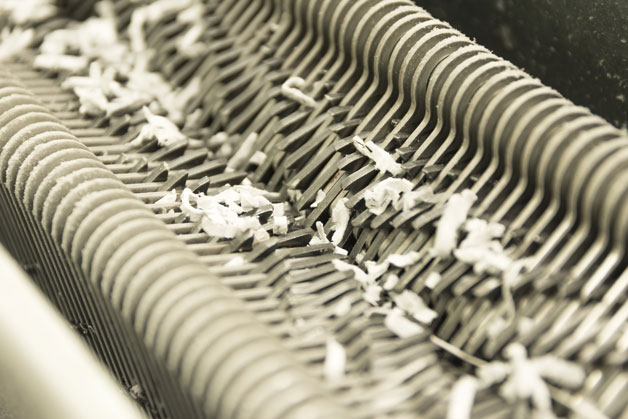 Twin-shaft machines make it possible to obtain raw materials of both coarse and fine fractions. The smaller the fraction, the longer it takes to process. The tire crusher can be equipped with a conveyor belt with a magnetic metal catcher to separate iron inclusions. Like single-shaft shredders, twin-shaft shredders do not completely clean the raw materials from metal and textile inclusions. But they have the advantage of being able to grind bulky raw materials.
Twin-shaft machines make it possible to obtain raw materials of both coarse and fine fractions. The smaller the fraction, the longer it takes to process. The tire crusher can be equipped with a conveyor belt with a magnetic metal catcher to separate iron inclusions. Like single-shaft shredders, twin-shaft shredders do not completely clean the raw materials from metal and textile inclusions. But they have the advantage of being able to grind bulky raw materials.
Twin-shaft crushers ATR / S 2000 from Novokuznetsk manufacturer Alfa-SPK have a capacity of up to 2 tons / hour, the price - from 2.8 million rubles. Also, twin-shaft crushers with a capacity of 700 to 25,000 kg / h are produced by the NETMUS company.
Tire Grinding Plants
Unlike universal single-shaft and twin-shaft shredders, tire shredding plants have a specific purpose - these are plants for the processing of used tires into crumb.
- The tire is fixed in a clamping drum.
- The drum is switched on in rotation mode.
- The cutting bit rotating in the opposite direction approaches the tire surface and begins to process it in layers, breaking the rubber into small chips.
- When the cord layer is reached, the movement of the bit is blocked. Thus, the metal part remains intact, and the resulting product is free of metallic impurities.
Tire grinders can be configured to process different tire sizes.They make it possible to obtain fine rubber crumb cleaned of impurities, and are able to replace expensive and large-sized lines for the processing of used car tires. Although, on average, they are inferior to them in performance.
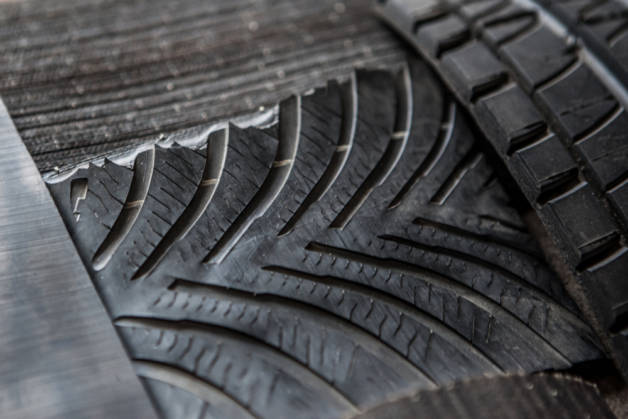
Processing technology
There are several ways to recycle old tires:
- crushing to obtain crumb rubber;
- burning;
- extraction of fuel oil during pyrolysis;
- recovery.
A promising and environmentally friendly direction of processing is crushing to rubber crumb. As a result, there is a secondary raw material available for the creation of new tires, shoes, railroad tracks.
We advise you to read: Problems of protecting the natural zone of the Arctic deserts
Burning tires to obtain heat energy
Burning a ton of tires produces heat energy equivalent to a ton of coal. But there are restrictions on the mass implementation of such actions:
- In ordinary power plants that do not have special equipment, it is prohibited to incinerate.
- When burned, a toxic compound appears - sulfur dioxide. Therefore, enterprises must have exhaust air purification systems. Otherwise, acid rain will damage nearby farmland.
- If the temperature is insufficient, then hazardous dioxins are formed in the waste from polychlorides.
The result of heating tires up to 400 degrees without oxygen:
- pyrolysis gas;
- liquid hydrocarbon fraction;
- soot;
- metal cord waste.
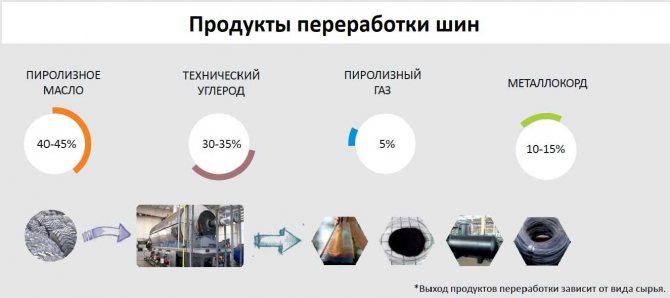
Percentage of Tire Pyrolysis Products When incineration is used to recycle tires and rubber goods, many additional problems arise. The environment is getting polluted, people are suffering from dangerous toxic compounds in the air. It makes sense to use combustion technology only if there are powerful treatment facilities.
Tire pyrolysis
Pyrolysis of tires to obtain fuel oil is an expensive and environmentally hazardous way of disposal. Under the influence of temperature, toxic compounds are released into the surrounding atmosphere, which negatively affect humans, animals and plants.
Additionally, it should be understood that pyrolysis requires special equipment, including treatment facilities. Pyrolysis is expensive and takes a long time to pay off.
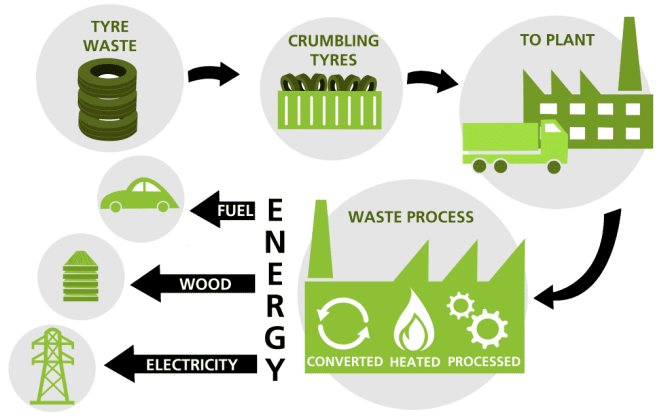
Grinding tires to obtain crumb rubber
When tires are processed into crumbs, secondary raw materials appear, which are widely used in all spheres of life. Rubber boots and roofing material are all made from crumb rubber. An important point is the minimum damaging effect on the environment.
Grinding includes the following steps:
- Sorting of tires arriving at the factory. Removing elements that could damage the shredder.
- Preliminary preparation. With the help of an industrial knife, the rubber is crushed into pieces measuring 20.0x20.0 cm.
- Extraction of metal fractions using a magnetic device.
- Fine grinding, passing through impact crusher and separator.
- Passing through a vibrating sieve for sorting into fractions.
- Packing and warehousing.
Recovery
A new direction in tire recycling, contributing to a 6-fold reduction in oil costs. Therefore, the method is classified as highly rational and profitable.
